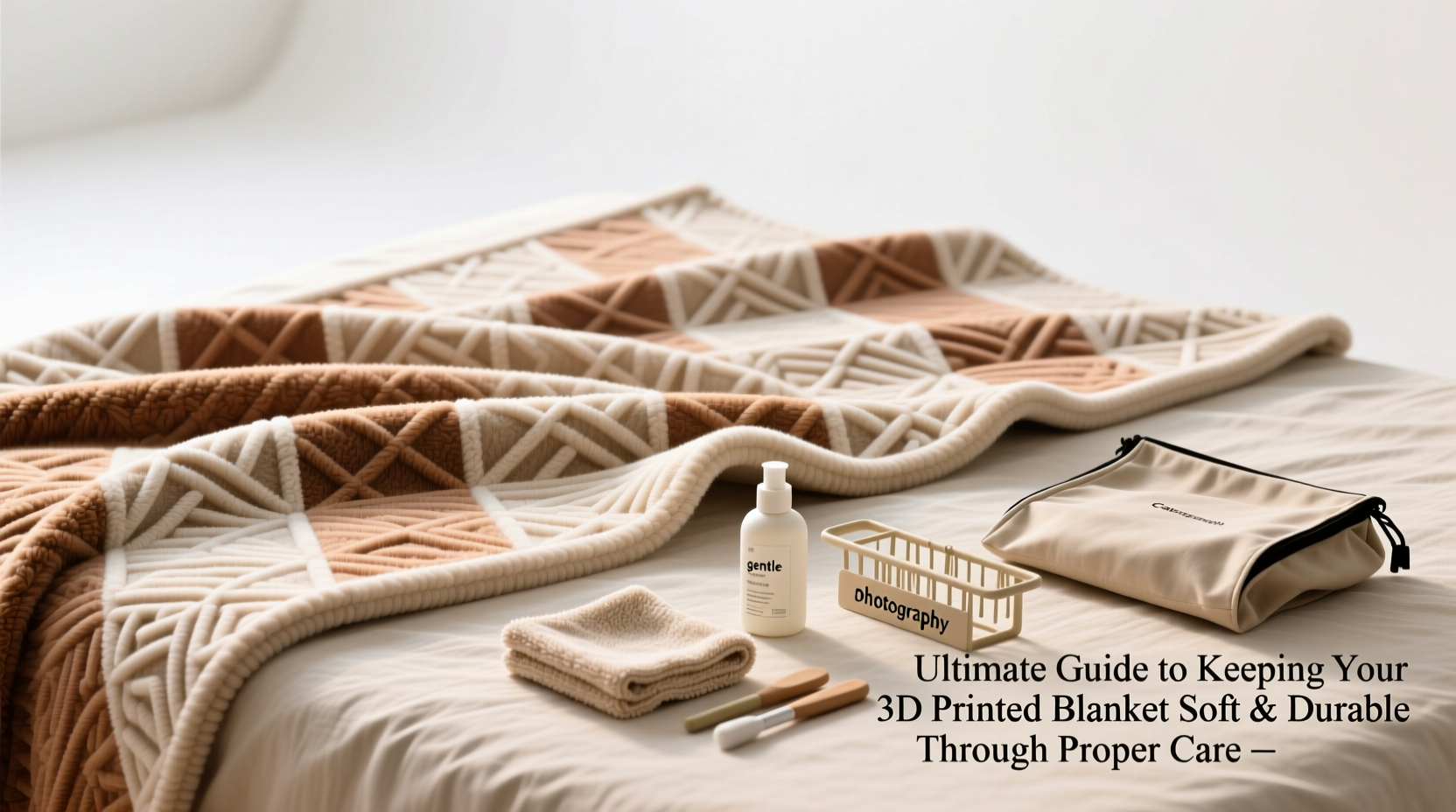3D printed blankets have emerged as a unique fusion of technology and comfort, combining intricate designs with functional warmth. Unlike traditional textiles, these blankets are typically made from flexible filaments like TPU or PETG, which offer elasticity and resilience. However, their innovative construction demands specialized care to preserve softness, structural integrity, and appearance over time. Without proper maintenance, even high-quality prints can stiffen, crack, or lose their luster. This guide delivers actionable, science-backed methods to ensure your 3D printed blanket remains soft, supple, and durable for years.
Understanding Your 3D Printed Blanket Material

The longevity and feel of your blanket begin with knowing the filament used in its creation. Most 3D printed textiles rely on thermoplastic polyurethane (TPU) or thermoplastic elastomer (TPE), both prized for flexibility and durability. PETG is another common option—less elastic but more resistant to UV and chemical degradation. Each material responds differently to heat, moisture, and mechanical stress.
TPU-based blankets retain softness best when not exposed to prolonged heat or direct sunlight. They resist abrasion well but can absorb oils from skin over time, leading to stiffness if not cleaned regularly. PETG holds shape excellently but may become brittle with repeated folding under pressure. Recognizing your blanket’s base material allows you to tailor care routines accordingly.
Step-by-Step Cleaning Process for Long-Term Softness
Cleaning a 3D printed blanket requires a gentle approach that removes dirt without compromising layer adhesion or surface texture. Harsh agitation or high heat can warp or harden the material. Follow this precise sequence:
- Dust Removal: Use a soft-bristle brush or lint roller to remove surface debris. Avoid vacuuming with strong suction, which may pull at delicate lattice structures.
- Spot Test: Dampen a small, inconspicuous area with a mix of distilled water and a single drop of mild, pH-neutral detergent. Wait 10 minutes; check for discoloration or texture change.
- Hand Wash Only: Fill a basin with lukewarm water (under 30°C / 86°F). Add a small amount of non-abrasive detergent. Submerge the blanket and gently swirl—do not wring, twist, or scrub.
- Rinse Thoroughly: Drain soapy water and refill with clean, cool water. Repeat until no suds remain. Residual soap accelerates stiffening.
- Drying: Lay flat on a clean towel in a shaded, well-ventilated area. Roll the towel with the blanket inside to extract excess moisture. Never hang vertically—gravity distorts flexible joints.
Machine washing, even on delicate cycles, risks delamination due to tumbling forces. Dryers are strictly off-limits—heat above 40°C (104°F) permanently deforms most flexible filaments.
Do’s and Don’ts: Maintenance Best Practices
| Do | Don't |
|---|---|
| Store flat or loosely rolled with acid-free tissue paper | Fold tightly or compress under heavy objects |
| Rotate usage every few weeks to prevent stress fatigue | Use daily without periodic rest periods |
| Condition occasionally with silica gel packs to absorb humidity | Store in plastic bins—trapped moisture promotes microbial growth |
| Brush lightly with a nylon cloth monthly to maintain surface smoothness | Expose to direct sunlight for more than 15 minutes at a time |
Real-World Example: Preserving a Heirloom TPU Throw
Sophia, a textile artist in Portland, received a custom 3D-printed baby blanket made from translucent blue TPU with a honeycomb weave. Designed as a keepsake, it was meant to last decades. After two years of nightly use without intervention, the edges began to stiffen and the center developed micro-tears near hinge points.
She consulted a materials conservator who recommended a bi-monthly regimen: hand rinsing with filtered water, air drying away from HVAC vents, and storing between cotton sheets in a cedar-lined chest. Within three months, tactile softness returned, and after one year, stress fractures stopped progressing. The blanket now rotates with a backup every six weeks, extending joint recovery time. Her experience underscores that even highly engineered fabrics benefit from intentional downtime and climate-aware handling.
“Flexible 3D-printed textiles behave like living structures—they need breathing room and hydration balance just like organic fibers.” — Dr. Lena Torres, Polymer Conservation Specialist, MIT Materials Lab
Seasonal Care Checklist
To maintain peak condition year-round, follow this seasonal maintenance plan:
- Spring: Deep clean and inspect for weak joints; apply anti-static spray if used near electronics.
- Summer: Limit sun exposure; store in a breathable linen bag to prevent yellowing from UV.
- Fall: Recondition by lightly misting with distilled water and allowing natural rehydration.
- Winter: Avoid contact with wool sweaters or rough knits that cause friction wear; use only over smooth PJs.
Frequently Asked Questions
Can I iron my 3D printed blanket to remove wrinkles?
No. Irons generate localized heat far exceeding the glass transition temperature of most flexible filaments. Even steam settings risk warping. Instead, lay the blanket under a light board book overnight to flatten minor creases.
How often should I clean it?
For regular use, spot-clean monthly and perform a full hand wash every 3–4 months. If used primarily for decoration, deep clean once per year. Frequency increases if shared among multiple users or pets.
Is it safe to use fabric softener?
Absolutely not. Fabric softeners contain cationic surfactants and silicones that coat polymer surfaces, reducing breathability and accelerating stiffness. They may also degrade inter-layer bonding over time.
Final Thoughts: Caring for Innovation
3D printed blankets represent a leap forward in personalized, functional design—but their performance depends on informed stewardship. By treating them not as disposable novelties but as engineered heirlooms, you unlock lasting softness and resilience. Simple habits—like avoiding heat, rotating usage, and hand-washing mindfully—compound into dramatic lifespan gains. These pieces blend artistry and engineering; honoring them with proper care ensures they remain both beautiful and comfortable for generations.









 浙公网安备
33010002000092号
浙公网安备
33010002000092号 浙B2-20120091-4
浙B2-20120091-4
Comments
No comments yet. Why don't you start the discussion?